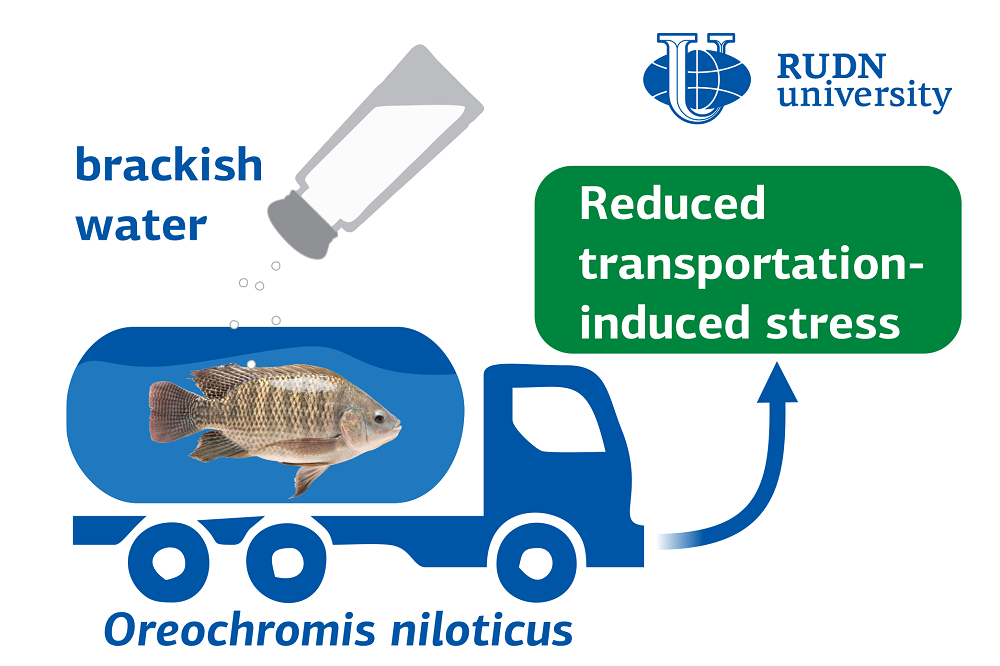RUDN University Biologist: salted water saves fish from stress when transporting
Stress during forced relocation is experienced not only by people, but also by fish in aquaculture. Due to stress, the internal balance in the body of fish is disturbed — how the composition of blood and enzymes changes along the chain, muscle tone increases, behavior changes. Ultimately, this leads to a decrease in health indicators and even death. A RUDN University biologist with colleagues from Brazil and Iran proposed a simple way to alleviate stress during transportation in Nile tilapia, one of the most common species in fisheries. To do this, one just need to salt the water a little.
“Fish is an important product that is present in the diet of many people. It is important to deliver the fish fresh. One of the ways is the delivery of live individuals to stores. However, transportation is a stressful event that negatively affects fish physiology. Stressful events increase cortisol levels, which increase the energy needed to cope with stress. Higher energy costs cause an increase in the gill ventilation rate, which leads to osmotic and ionic imbalance,” Morteza Yousefi, Associate Professor of the Department of Veterinary Medicine, RUDN University.
In itself, the idea of adding salt to water during transport to alleviate stress is not new. However, for the Nile tilapia, the possibility of such a practice has not yet been studied. RUDN University Biologists studied 84 individuals of the Nile tilapia grown on an Iranian fish farm. The fish were divided into three groups and placed in a medium with different concentrations of salt — 2 or 4 grams per liter — and completely fresh water. For three hours, the fish were transported by truck, after which their performance was examined.
The main indicator of stress biologists cortisol levels were measured. Salt supplementation at a concentration of 2 and 4 grams per liter lowered cortisol levels. Fish in fresh water after transportation increased cortisol from 30 to 80 nanograms per milliliter, and fish in salt water — only 60-65 depending on the salt concentration. After recovery, all fish had cortisol back to around 40 nanograms. Also, fish transported in salted water had improved indicators of liver condition, oxidative stress and mineral composition. According to the sum of indicators, the best medium was water with 4 grams of salt per liter.
“Adding salt to the water has a positive effect on the transport of Nile tilapia. In fish in salt water, the degree of stress is reduced, the liver is less damaged, oxidative stress is less pronounced, and hydromineral balance is better maintained. A concentration of 4 grams per liter of salt is useful for transporting Nile tilapia,” Morteza Yousefi, Associate Professor of the Department of Veterinary Medicine at RUDN University.
The results are published in Aquaculture Reports.
A RUDN agrotechnologist has identified wheat genotypes that are resistant to a dangerous fungal pathogen that infects plants even before the snow melts and reduces yields.
RUDN University engineers have calculated the parameters of a system that can prevent lunar power plants from overheating. These developments will be needed when planning for long-term lunar missions and colonizing the satellite.
Landfills are the third largest source of anthropogenic methane in the world. They account for ~11% of estimated global emissions. Methane is 80 times more powerful than carbon dioxide and is the second largest driver of man-made climate change. Scientists from around the world met at Zhejiang University's Hangzhou campus to determine the best available technologies for recovering energy and materials from non-recyclable residual waste.
